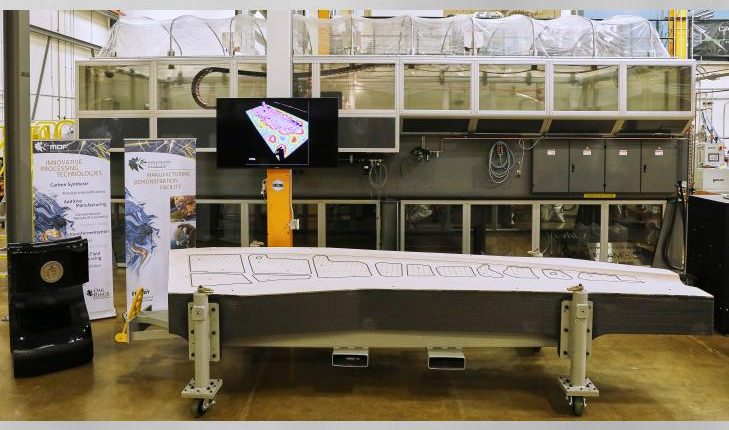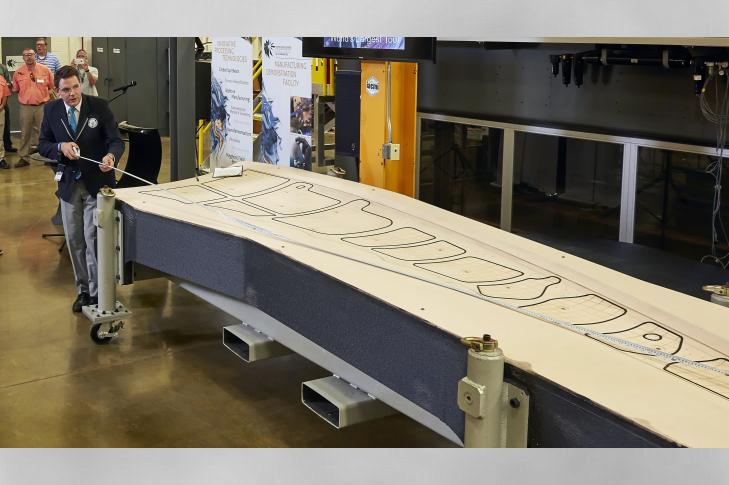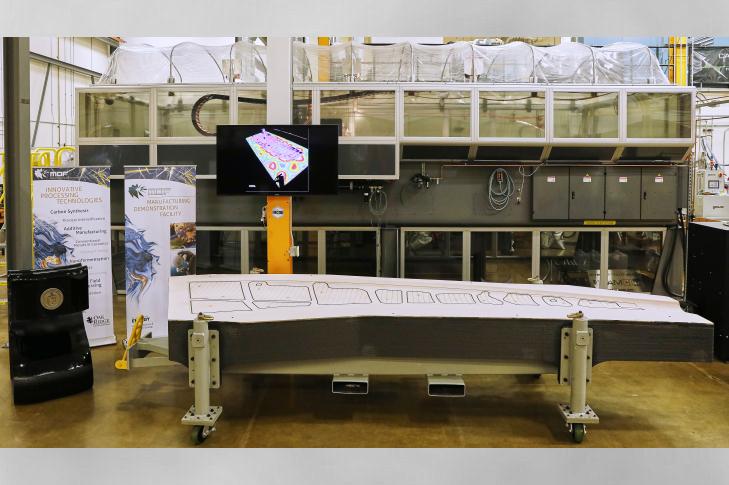
The largest solid 3D-printed item will help build Boeing aircraft
The Department of Energy’s Oak Ridge National Laboratory (ORNL) has just received recognition for largest solid 3D-printed item ever created. The 3D printed trim-and-drill tool was developed in just 30 hours using carbon fiber and ABS thermoplastic composite materials and will be tested in the building of the Boeing 777X passenger jet.

The 3D-printed structure measures in at 17.5 feet long, 5.5 feet wide and 1.5 feet tall, comparable in length to a large sport utility vehicle and weighs about 1,650 pounds.
“The existing, more expensive metallic tooling option we currently use comes from a supplier and typically takes three months to manufacture using conventional techniques,” said Leo Christodoulou, Boeing’s director of structures and materials. “Additively manufactured tools, such as the 777X wing trim tool, will save energy, time, labor and production cost and are part of our overall strategy to apply 3D printing technology in key production areas.”

Guinness World Records judge Michael Empric measured the trim tool and declared that it exceeded the required minimum of 0.3 cubic meters, or approximately 10.6 cubic feet, giving it the new record title.
“The recognition by Guinness World Records draws attention to the advances we’re making in large-scale additive manufacturing composites research,” said Vlastimil Kunc, leader of ORNL’s polymer materials development team. “Using 3D printing, we could design the tool with less material and without compromising its function.”
After ORNL completes verification testing, Boeing plans to use the trim-and-drill tool in its new production facility in St. Louis and provide information back to ORNL on the tool’s performance. The tool will be used to secure the jet’s composite wing skin for drilling and machining before assembly.
Production of the 777X is scheduled to begin in 2017 and first delivery is set for 2020.

Comments are closed, but trackbacks and pingbacks are open.